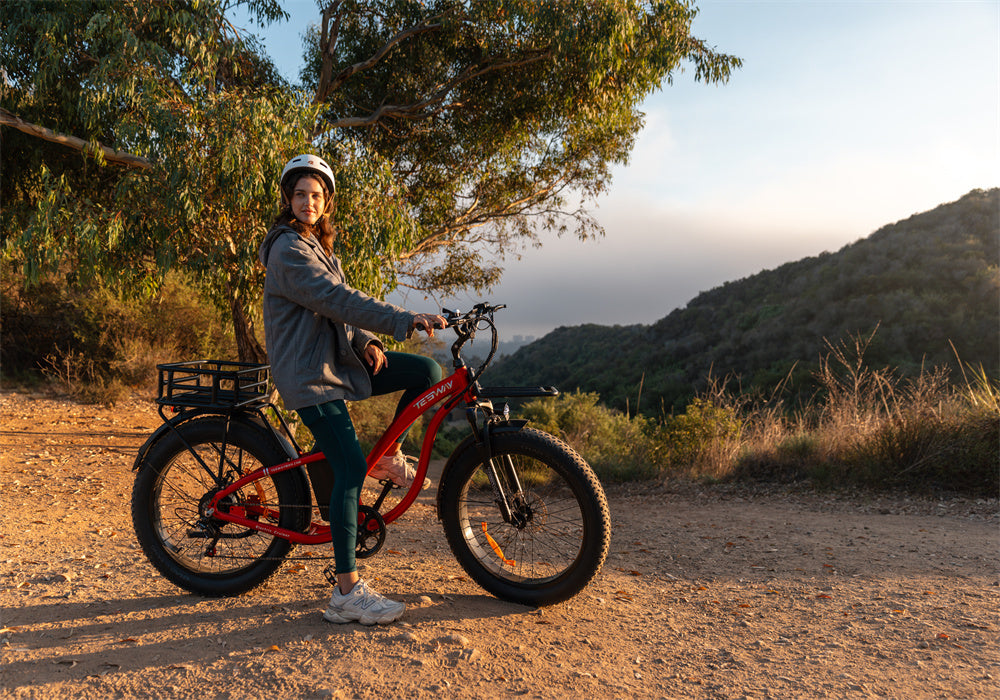Electric bicycles have revolutionized the way we ride, providing various powerassist technologies that make cycling both more accessible and enjoyable.
Among these technologies, torque sensor pedal assist and cadence sensor systems stand out, each delivering a unique riding experience.
In this guide, we'll delve into how these systems function, their benefits, and which types of riders they suit best, helping you make an informed decision for your next adventure.
Torque Sensor Pedal Assist
A torque sensor pedal assist detects the force applied to the pedals, adjusting motor assistance proportionally.
The more force you use, the more power the motor supplies, creating a smooth, responsive ride that feels natural—almost like a traditional bike, but with an extra push.
Benefits:
-
Natural Ride Feel: Assistance is proportional to your effort, delivering a seamless and intuitive boost.
-
Optimized Battery Use: Power is adjusted based on your exertion, enhancing battery efficiency and extending riding range.
-
Versatile for Varied Terrain: Wellsuited for hills and changing terrain, automatically adjusting to different levels of difficulty.
-
Enhanced Control: Offers improved control over speed and power, resulting in a more precise and comfortable ride.
Drawbacks:
-
Higher Price: The advanced technology used in torque sensors makes them more costly.
-
Requires Consistent Effort: Continuous pressure on the pedals is needed, which can lead to fatigue over longer distances.
-
Limited Availability: Not all eBike models are equipped with torque sensors, limiting your options.
-
Challenges with Small Wheels: Torque sensors might not be as effective on bikes with smaller wheels (e.g., 20inch wheels), as maintaining consistent torque can be challenging.

SEE ALSO What Sensors Are Used in Electric Bike?
Cadence Sensor System
Cadence sensor systems detect your pedaling rate using magnets around the crank or pedal axle.
The motor provides a fixed level of assistance once it senses movement, regardless of how hard you pedal.
This makes cadence systems a simpler, more straightforward option for riders who want steady support without much variation.
Benefits:
-
Consistent Assistance: Offers steady power regardless of your exertion, making it ideal for casual, relaxed rides.
-
BudgetFriendly: cadence sensors are generally more affordable, making them a costeffective choice.
-
Ease of Use: Simpler technology with fewer components, resulting in easier use and lower maintenance needs.
Drawbacks:
-
Less Responsive Ride: The motor response might feel less connected to your pedaling efforts compared to a torque sensor.
-
Less Efficient Battery Use: Providing continuous assistance may drain the battery faster, which can reduce the overall range.

Which System Should You Choose?
Deciding between a torque sensor pedal assist and a cadence sensor system depends on your riding preferences and habits.
If you want a responsive, efficient ride that adapts to terrain—especially for hilly areas or diverse surfaces—a torque sensor system may be the better option, particularly for larger bikes.
However, if you are seeking a simple, budgetconscious solution that delivers consistent assistance, or if you have a smaller bike, a cadence sensor system might suit your needs better.
Find the best electric bike at Tesway!
FAQs
How fast can electric bikes go?
In many countries, electric bikes are legally limited to a top speed of around 20-28 mph (32-45 km/h) depending on the class of the e-bike and local regulations. The motor stops providing assistance once this speed is reached.
Do I need a license to ride an electric bike?
In most regions, electric bikes with pedal assist under certain speed and power limits (typically 750W or less) do not require a license. However, local laws may vary, so it's advisable to check the regulations in your area.
How often do I need to charge my electric bike battery?
This depends on your usage. Regular riders might need to charge their battery after each ride, while those riding less frequently may only need to charge once a week. It’s best to avoid fully depleting the battery, as frequent deep discharges can reduce its lifespan.
Don't Miss These
Are Electric Bikes Good for Long Distances?
How Long Does an eBike Battery Last? Plus, How Much You Should Pay
Do All Electric Bikes Use the Same Battery?
Pedal Assist vs Throttle: Which Is Better for Your Bike?
How Much Does It Cost to Replace the Battery in an Electric Bike?






Share:
How to Choose the Right Electric Bike for You
Single vs. Dual Battery: Which is Best for Your E-Bike?